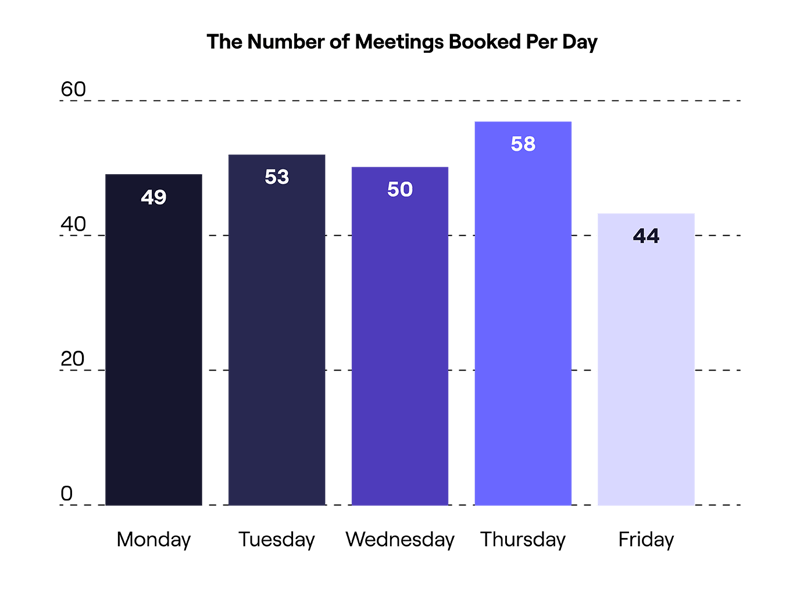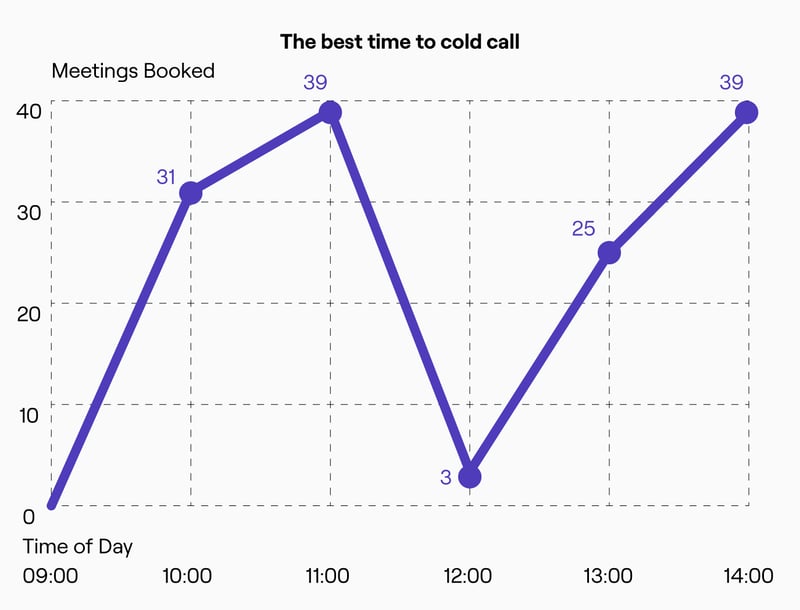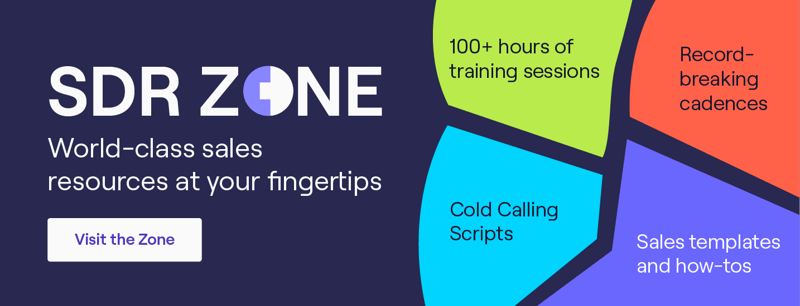B2B Cold Calling Ultimate Guide: Definition, Tips, Examples
If you’re still using outdated tactics from 1999, it’s time for an update - discover the latest cold calling tips for 2024.
Cold calling has evolved to meet the dynamic demands of modern sales and continues to drive substantial revenue. If you’re unsure where to start or finding it difficult to reach the right contacts, you’re in the right place.
At Cognism, our sales experts excel in the refined art of cold calling. We’ve assembled our best cold calling techniques to enhance your strategy in 2024, complete with live demonstration videos and essential resources for sales representatives.
Let’s dive in 👇
What is B2B cold calling?
Cold calling is a sales strategy in which your company reps contact potential customers who haven’t directly expressed the intention to buy from you or contacted your company previously.
Traditionally, cold calling involved phoning a broad audience trying to sell something. It was interruptive, pushy, and had low success rates.
Nowadays, B2B cold calling is more targeted and effective. It focuses more on customer needs, delivers a valuable message, and is quantifiable.
How to cold call: the cold calling process
Most organisations that wonder if cold calling is dead aren’t leveraging the latest tips and techniques correctly. Cold calling succeeds with well-targeted accounts and thorough preparation guided by expert tips.
Follow these 14 steps to make better sales calls.
1. Define the call’s objectives
Before you pick up the phone, you need to work out what you want to achieve.
Are you looking to schedule an appointment? Close a sale? Qualify them? Or maybe invite them to an event?
Keep your objective in mind and don’t stray from it.
Remember, cold calling is just one part of a multi-stage sales process. Focus on what you need to do on your cold call, no more and no less.
For example:
Don’t bring up pricing if you want to book a demo. For most SDRs, pricing is irrelevant. Let your AEs handle that!
2. Research your prospects before you call
Knowing who and when to dial is critical to warming up your call.
Hence, creating an ideal customer profile (ICP) and using sales triggers are standard industry practices.
But as helpful as they are, they can only take you so far. You must dig deeper into your prospects and learn as much as possible about them.
Here are some of the best pre-call cold calling tips:
Look up your prospects on LinkedIn
It’s a straightforward way to gather valuable information to warm up your cold call.
LinkedIn profiles can also help you verify whether the prospect is in a decision-making position.
Research the prospect online
Has the prospect published a blog or written any articles online?
If so, read them! They’ll help you to work out the kind of person you’ll be talking to.
For example:
If the articles are data-heavy and full of facts and stats, then you know to adjust your pitch accordingly.
Similarly, are there any career events in the prospect’s life that you can mention?
For example:
Have they recently won any industry awards or had a big promotion?
Use these events in your cold call to help build a stronger relationship with them. Remember that everyone likes to be flattered from time to time!
💡 No time to read? Don’t worry! Check out the 5 things to do on every sales call as advised by our SDRs.
3. Enrich cold call lists with actionable data
Once you have a list of qualified prospects, enrich it using a B2B database provider to ensure accuracy - a vital tip for successful cold calls. It’s crucial that this data is fresh, accurate and compliant. Contact data decays very quickly, and when it does, it becomes useless.
Fortunately, sales intelligence tools update their databases when a prospect leaves a company, gets promoted, etc. The likelihood of cold calling the right person and having a meaningful conversation is significantly higher when using them.
Cognism’s Chrome extension provides an easy and effective way of enriching the following:
- Salesforce and Outreach records without leaving them.
- LinkedIn profiles.
- Sales Navigator lists.
- And viewing key account and prospect information on corporate websites in the browser.
💡 Find out why the Cognism Chrome extension is every rep’s favourite cold calling tool - watch this walkthrough 👇
4. Use a cell phone numbers list
The nature of cold calling has changed post-pandemic with many stakeholders working from home. But this doesn’t mean you can’t achieve great results!
Many companies are opting to work remotely full-time. With fewer people in the office, even direct dials are becoming less valuable. For cold callers, it’s more important than ever to find leads’ cell phone numbers.
At Cognism, we’ve noticed the change and so we’ve developed global mobile phone coverage so that SDRs can connect with prospects even in hybrid work settings.
And we’ve got the biggest and most accurate mobile data database. Why?
Because our data is human-verified to ensure you’re speaking to the right person. Our data team manually verifies the numbers in our database. So when you need to find CEOs’ phone numbers, Cognism will make it happen.
Here’s what SaaSLeads said about Cognism’s Diamond Data®:
“Cognism’s Diamond Data® phone-verifies the identity and number of the prospect.”
“As a sales rep, I don’t have to worry about the quality of data affecting my ability to hit quota. This, in turn, saves a huge amount of time and enables me to book more meetings.”
💡 Click to read the full SaaSLeads case study.
5. Dial at the best time
There are times of day when people are happy to take cold calls. There are also times when it’s just not convenient.
Top tip: research when the best times to cold call are in your industry.
According to Cognism’s State of Cold Calling Report, the best time of day to call is either 11am or 2pm, just before or after leads take lunch. And the best day to call is Thursday.
See the results of our survey below:


6. Get past the gatekeeper
If you do find yourself talking to a gatekeeper, you need to have a plan to get past them and get through to the prospect.
Here are some useful cold calling strategies for getting past the gatekeeper:
Keep calm and try to sound senior
Speak confidently, slowly, and concisely. If you can do this, you will sound experienced and important. The gatekeeper may be less inclined to hold you up.
Don’t sell to the gatekeeper
Remember the gatekeeper isn’t a decision-maker, so don’t pitch to them. In fact, say as little as you can get away with.
But always be friendly and professional - the gatekeeper can be your ally for connecting you with the decision-maker!
Give the impression that you know your prospect well
Use your prospect’s first name when talking to the gatekeeper - that could help you in getting redirected to the decision-maker.
7. Use a script
A well-crafted cold call script is one of the most overlooked techniques that can dramatically improve your calling success.
Cold calling scripts and voicemail scripts are the heart of our sales strategy at Cognism. Every sales person should use them!
In our experience, the structure of your sales pitch is the key to a successful cold call. It can be broken down into five segments:
- Opening
- Pitch
- Questions
- Conversation
- Closing
It’s important to stress, though, that this is used as a general guide for sales pitches, not an absolute rule.
The best cold calling process is built on finding individuality in selling. Each sales rep is different; they should find their own ways, tones and vocabulary to convey their messages. The structure is there to help with the flow of the conversation, not to pin down reps’ every word.
After all, the last thing any prospect wants to hear is someone reading robotically down the phone. That’s the surest route to cold call failure.
When it comes to cold calling, one size doesn’t fit all.
8. Qualify your prospects on the call
You can save a lot of time if, during the call, you identify the prospect’s pain and judge if your solution is a good fix to it.
Jonathon Ilett, VP of Global Sales at Cognism, who has years of outbound sales experience under his belt, gave us a run-down of why it’s important:
“All salespeople are fighting against the clock. We’ve all got targets to hit and a finite amount of time in which to hit them. You don’t want to be wasting your time on a prospect that isn’t a serious contender for making a purchase.”
You can qualify cold call prospects by asking open-ended questions about their budget, authority, needs, and time (BANT criteria).
Which leads us to...
9. Ask the right questions
Jonathon Ilett advises asking open-ended questions; they get the prospect talking and keep the conversation going.
What are open-ended questions?
They’re questions that don’t elicit a ‘yes’ or ‘no’ response. They’re great for fact-finding and rapport-building. The more information you get from the prospect, the easier it is to qualify them.
In any cold call, the prospect must do 70% of the talking, while the salesperson should do only 30%. Here are examples of cold calling questions that can help you:
- What does your current business development process look like?
- How does your sales team generate new leads?
- Who would normally be involved in buying decisions for new tech?
- What tools are you currently using?
- What regions are you looking to prospect into?
- Have you used data providers in the past?
- What did you like about them? What did you dislike?
- What are your current business growth goals?
- Are you in a position to take on new clients right now?
10. Learn how to handle objections
Prospects are likely to have concerns about the product or service you’re selling. To move the deal forward, you must try to alleviate them.
The good news is that sales objections aren’t a sign that the prospect isn’t interested. Quite the opposite!
Objections during a cold call are an indicator that the prospect is interested but doesn’t yet have a full understanding of your product or service. It’s your job as a salesperson to give them that understanding.
Here are some quick tips:
- Most cold calling objections are entirely valid. You can’t just brush them off.
- You must provide insight and give the prospect a compelling reason to buy from you.
- Don’t improvise and make it hard for yourself. Instead, ensure you have a process in place for dealing with common objections.
11. Use tools that help you sell remotely
It can be hard to find a connection with remote prospects. Loads of companies are getting creative with their outreach to stay ahead of the curve.
Here’s a list of a few cold calling tools that give our team an edge:
- Vidyard is a video platform we use at Cognism to record short pieces of video and embed them into emails. It’s a way to warm up a cold calling approach, helping prospects put a face to a name.
- Reachdesk used to be the people who would send cupcakes to your prospects’ desks. Now, they send Uber Eats vouchers! Why not use Reachdesk to buy your prospect dinner?
- Cognism is one of the best SDR tools that can propel your cold calling into the 21st century. It’s a sales intelligence platform with accurate person and company-level data and international coverage. We use our own tool to build red-hot cold calling lists that connect us to senior decision-makers daily.
12. Analyse and adapt
To understand how well your cold calling strategy is working, collect as much data as you can.
Take notes on every call. Everything you hear is information that may come in useful later. Even if you’re logging calls in your CRM later, don’t rely on your memory.
Here are some things to track:
- What times of day are best to call?
- How many phone calls does it take to get through to a prospect?
- How long are you spending on each call?
- How can you improve these numbers?
Record your calls and go through them with your mentor. Look for ways to enhance your skills.
One useful piece of advice is to A/B test your cold calls. Try out different versions and approaches. Do certain lines or ways of speaking work better than others?
💡 Watch an example of a cold calling role play and hear Morgan J Ingram, LinkedIn Top Sales Voice, give actionable feedback on how it went.
13. Know when to hang up
And the best cold calling tip?
Remember that the purpose of asking questions during a cold call is to discover if the prospect needs your solution. If not, simply walk away. You don't have to sell to everyone.
Here's what Jonathon Ilett said:
“If you find you can’t qualify the prospect, walk away. Never close a client that you know you won’t be able to deliver to.”
14. Keep calling!
The latest cold calling statistics don’t lie!
It takes two to three touches to connect with a prospect for 42% of top performers and 24% of the rest salespeople. The more calls you make, the more opportunities you’ve got to make a sale.
So, even if you’ve had a bad call or numerous rejections, always make one more dial.
The trick is to remain positive and persevere. Never give up. Rejection is a fact of cold calling life. But there are tactics you can use to turn even the most difficult cold call to your advantage. See below for more!
The final cold calling tip is to always ask prospects “Why?” when they say they’re not interested. This makes the prospect come up with reasons for their rejection - reasons that may help you to improve your pitch or technique in the future.
What are the best cold calling tips?
If you want to hit the nail on the head with cold calling, listen to two B2B sales superstars who are here to help:
- David Bentham, VP Global Sales Development at Cognism.
- Morgan J. Ingram, former Sales Director and Cognism’s Creative Advisor.
They recently sat down with volunteers looking to improve their cold calling techniques in our live workshop. We’ve covered their seven killer tips for cold calling success!
Tip 1: It’s important to pause
Pausing - it’s an art you need to master.
We understand that you might have the tendency to fill every single gap of silence as a sales development rep.
But Morgan said we should learn to “embrace the silence - because it’s a power move.”
He also said that when you pause:
“You’re allowing yourself to embrace sales objections and truly listen to what the prospect is telling you, so you can ask better questions.”
The key takeaway?
Pausing can help you connect with your prospect. Remember - talk with them rather than at them!
Tip 2: Patience is a virtue
Following on from Morgan’s advice about pausing, David also believes in the idea of patience:
“One thing I really struggled with when people gave me an objection or a rebuttal was that I tended to jump in and handle them immediately. And it often makes you sound robotic.”
Bots over email are worse enough. We don’t need them over our calls too!
So, what’s the solution here? Dave said:
“On any cold calling objection you get this year, follow up with a relevant question. They might give you more information about the objection.”
For example, a prospect might say:
“It sounds too expensive for me.”
And if that’s the case, follow up with something like:
“How much would you pay for this product?”
Those kinds of questions will help to open up the prospect.
It can also “help you identify the pain points that are specific to your prospect. And then you can tailor your pitch.”
Once again, this tip circles back to the idea of connecting with your prospects.
Don’t just apply the same basic technique across the board. Because one cold call example might be drastically different from the next.
Tip 3: Validate
During the workshop, David identified a common mistake that SDRs tend to make:
“As an expert in your product, you’re going to know all the benefits under the sun. But listing generic responses doesn’t get you far.”
That’s why David recommends that you focus on a couple of key benefits that are relevant and will resonate with your prospect:
“It’s about the “why” behind the points you’re making. Validating the points you’re making for your prospects is important, especially when you’ve got a short window of time.”
“So double down on those 2 points that are relevant for your prospect.”
Tip 4: Always finish your statement with a question
The SDR’s job is to be in tune with your prospects.
Morgan said that it’s essential to “understand what your target prospects are looking for”.
Because if you just end on a statement, prospects don’t know where to go from that conversation.
For example:
If you’re selling a product that’s proven to help with “xyz”, follow up with a question to your prospect, such as:
“What does proven mean to you?”
These kinds of questions help you to open up and have a real conversation with your prospects.
Tip 5: Use the word “imagine”
There’s no harm in helping prospects picture scenarios.
It can be hard at times, especially because you’re communicating over the phone.
That’s where the magic of “imagine” comes in. Because it helps to make your cold calls relatable.
Morgan said:
“When you use the word “imagine”, that person that you’re talking to has a visual of what you’re going to say. It’s critical.”
It’s all in the art of storytelling for your prospects.
Tip 6: Have strong closes to your calls
Nothing’s more important than how you close your calls.
Morgan and David agreed that the best way to end strong is to convince your prospects about the power of a demo:
“We want to justify to our prospects why demos are more powerful than just sending off a bunch of information over email.”
This is so true - think about how many emails the average C-suite executive will receive just in a day!
Morgan recommends you end with the following:
“I don’t want you to get blown up in your inbox by spam emails. So, instead, can we book a 30-minute demonstration of the visual I’m talking about?”
“Does that sound fair?”
This statement ensures that your prospect doesn’t forget about you. The emphasis on the word “fair” means that you’re not forcing prospects into the demo.
Tip 7: It’s about the quantity and quality of your questions
It’s great to ask your prospects lots of questions.
But have you ever taken a step back to think about the value of the questions you’re asking?
David said:
“The types of questions you ask are just as important as the number of questions you ask.”
What are the best types of questions?
You should ask broad and open-ended questions so prospects can give you the right information.
Such as:
“How are you currently going about sales and marketing?”
What makes a cold calling strategy effective in 2024?
Most B2B companies, like ours, use this sales method because of its many benefits. We don’t want to rely on the buyer to do their research and decide if they’re a good fit for our solution.
And more importantly, cold calling ensures we don’t miss a perfect buyer!
Here are some more aspects that make cold calling a great sales strategy:
1. Fresh and compliant data
It may take a couple of dials to get through to the prospect you actually want to speak to. But without the compliant B2B data, you risk legal action; without fresh data, you’ll waste time.
When you cold call the decision-maker directly, you get the highest chance of moving them down the funnel.
2. Personal communication
Cold calling lets SDRs build personal relationships with prospects in remote-first workplaces, where face-to-face interactions are limited. Remember that you’re not phoning a total stranger anymore!
💡 You can warm up calls and build better rapport thanks to sales intelligence tools.
3. Consistent messaging
Cold calling scripts help even inexperienced sales reps consistently promote your product or service.
They also equip reps with methods of handling common objections and answering questions about your competitors.
4. Market insights
Prospect calling is an excellent opportunity to learn more about your targets’ pain points, and gauge their opinions on your product and competition.
It helps you better address prospects’ needs the next time you pick up the phone.
💡 Learn more about the importance of cold calling for driving more sales.
B2B cold calling tips summary
Cold calling works!
It’s still a fast, cost-effective, and powerful part of the B2B sales process. Its success comes down to the work you put in before you pick up the phone. The better you plan, the more likely you are to win.
Let’s sum up how to cold call in B2B sales:
- Work out your goal for each cold call before you pick up the phone. Stay 100% focused on it and don’t allow yourself to deviate.
- Enrich cold calling lists with actionable data. A good cold caller uses up-to-date and complaint data to reach the right person.
- Use direct dial mobile numbers. They make it easy to reach people working in a hybrid environment.
- Conduct primary research on your prospects. Use the insights you gain to make your cold calls even more successful.
- Research the best times to cold call and get dialling! Study your most successful cold calls and see if they happened at similar times of the day.
- Devise effective strategies for dealing with gatekeepers. It’s an important first step for any sales rep, as more than half of cold calls are answered by some sort of gatekeeper.
- Use the BANT criteria to qualify prospects on your cold call. Ask open-ended questions to make the process easier.
- Write down a cold call script that works for you. But don’t stick to it rigidly. Follow a set structure, but give yourself room to be flexible within it.
- Investigate each objection. Ask searching questions, listen to the prospect, and uncover the reason behind each one. Then use the information you’ve learned to handle objections effectively.
- Use tools to sell remotely. Think outside the box! Consider sending video recordings and Uber Eats vouchers to build better relationships with prospects.
- Be scientific about your cold calls. Log your results, analyse the data and learn from any emerging patterns.
- Don’t take rejection personally. Stay professional, ask the prospect for feedback and thank them, even if it’s negative. Then, take a deep breath and move on to your next call. Never let rejection affect your confidence!
- Ask the right question. Your aim is to discover if what you’re selling can help the prospect solve their problem.
- Know when to let go. You don’t have to sell to everyone!
Get more unmissable content for winning sales teams - browse on over to Cognism’s SDR Zone today! 👇

